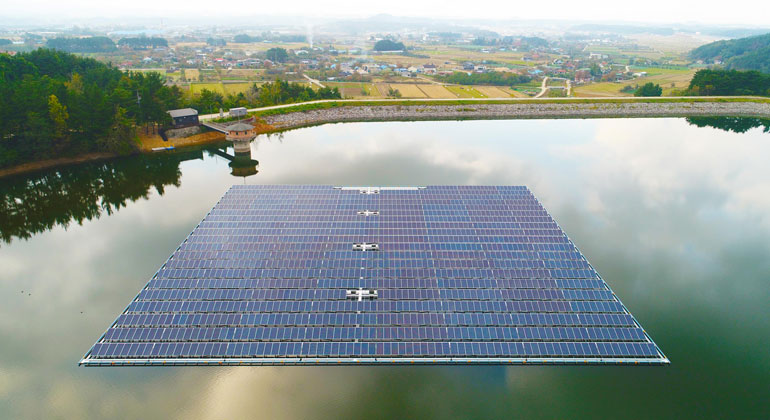Innovation project to reduce cost of floating solar plants
Large-scale floating photovoltaics plants can be one of the solutions for a sustainable energy supply. The EU has now approved a project that will optimize the anchoring and mooring of floating solar plants and adapt the anchoring to ocean environment as well. The aim is to significantly reduce the cost of anchoring floating solar parks.
RISE is part of a consortium of Swedish, Spanish and Portuguese players who have now received funding from the European Union’s European Maritime and Fishery Fund (EMFF) to develop the technology for anchoring and mooring floating solar cells. The project (FRESHER – Floating Solar Energy mooring: Innovative mooring solutions for floating solar energy) starts in November 2019 and lasts for two years.
– We are happy to be part of the value chain in such an innovative and emerging market, providing competences to the industry and supporting SME’s, says John Rune Nielsen, Director Research and Innovation at RISE.
The main goal of the FRESHER project is to be able to showcase and validate new innovative anchoring technology for floating solar power plants. The new technology results in both greatly improved LCoE (Levelized Costs of Energy) and increased capacity for solar power. The solar power should therefore cost less and provide more energy, which makes it possible to increase the rate of expansion so that ocean based solar parks can be profitable.
The project leader is Seaflex, a company that offers flexible and environmentally friendly anchoring and mooring solutions:
– Seaflex has worked in the marine industry for a long time, focusing on the environmental aspect of safe and efficient mooring systems. The development in this project is aimed directly at floating solar cells and is therefore very important to us, says Lars Brandt, CEO at Seaflex.
Another partner in the project is EDP, the Portuguese energy company whose energy production to 70 percent comes from renewable sources, and which already has an active floating solar cell park in northern Portugal. They see a great future for floating solar cells.
– Portugal has the ambition to be carbon neutral by 2050 and to have 80% of the energy supplied by renewable sources (RES), a commitment that EDP shared from the first day. Hybridizing alternative sources of energy with our hydro fleet is one of the fastest ways to help accomplish this target. Floating photovoltaic, only in Portugal, has a potential of more than 2 GW. However, the harsh environment in our dams and competition with other conventional RES technologies requires an optimization of the mooring designs and a reduction of costs . Our ambition goes in three ways: improve the existing solutions, bring competitive proposals and contribute for the design in harsher environments, as the offshore sea water applications, says João Maciel, Director EDP CNET.
FRESHER’s goal is thus to show that floating solar energy is ready to take the next step and grow in market share. Among the new technologies in the project are so-called PV anchoring suitable for the marine environment, which open up new markets and uses in the green energy transition. The design is based on lessons learned from previous tests and commercial implementations as well as experience from the industrial and offshore sectors.
Source
RISE 2019 – is the Swedish Research Institute and innovation partner.







